- Iterate
- Organizational Structure
- How the Best Organizations Use Transparency to Get Ahead
How the Best Organizations Use Transparency to Get Ahead
Table of contents
Transparency builds trust. In a world full of misinformation, data breaches, and privacy concerns, it’s understandable that consumers have started to demand more from the companies they buy from. People shop and consume information with a healthy dose of skepticism, aware that what they see online is often not the whole story. It’s why consumers want brands to be more transparent.

People
Many organizations these days have a public team page on their website. Unfortunately, most organizations only show founders, executives or board members, and don’t celebrate the entire team. It can be time consuming to keep a detailed team page updated but being transparent can help attract and retain new talent. Some organizations, like GitLab, have gone the extra mile and share their full org chart on their website.

Source: GitLab
Values
Explaining what an organization holds dear can be important for recruiting both talent and partnerships. The more open a company is about what they value, the easier it can be to connect with other people and organizations who hold the same values. And for companies in particularly charged fields, being clear about values is crucial to maintaining trust with consumers. At The New York Times, being upfront about value sets maintains a certain level of confidence between brand and customer.
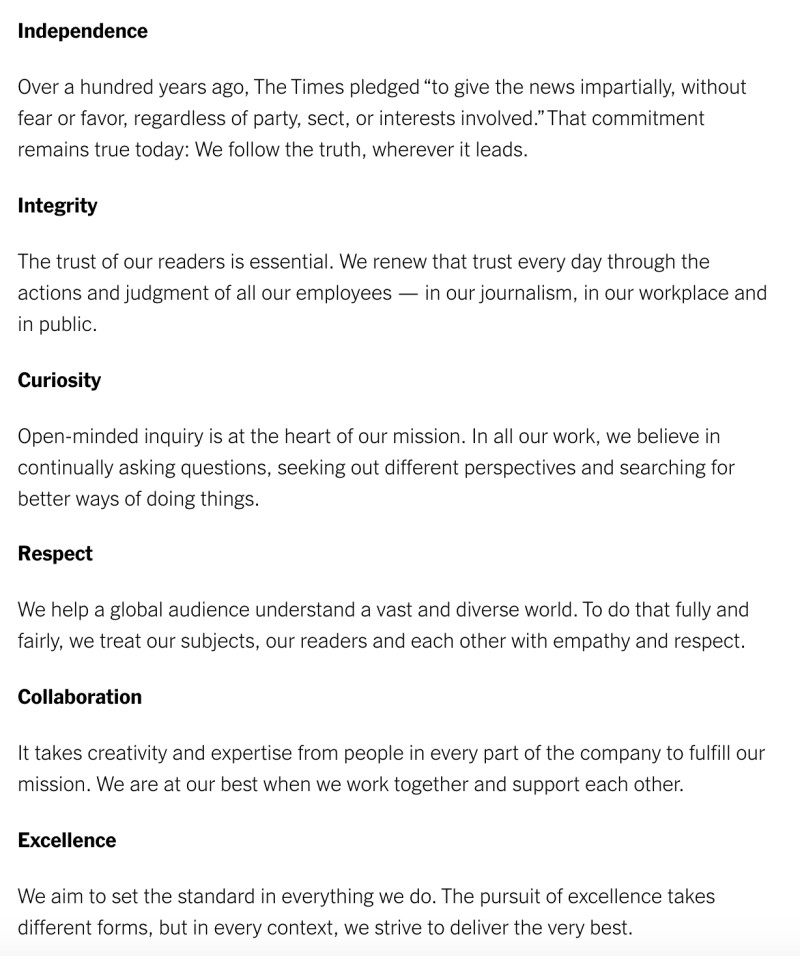
Source: The New York Times
Culture
Acquiring customers is hard. Acquiring talent is harder. But companies that are transparent about its culture generally have a much easier time finding both. Lyft, for example, created a snappy, inviting "life at Lyft" page that makes the kind of people they want to work with, and employ, crystal clear.

Source: Lyft
Processes
As a user, there is almost nothing more infuriating than falling in love with software, learning its ins and outs, and then waking up one day to find an unexpected large-scale design overhaul. Instead of feeling excited about the upgrades, you feel blindsided. Companies that are open and honest about their processes, like the collaborative design tool Figma, can eliminate that dynamic by making what they’re doing and why they’re doing it more clear. It also has the extra benefit of showing that it's a good place to work.
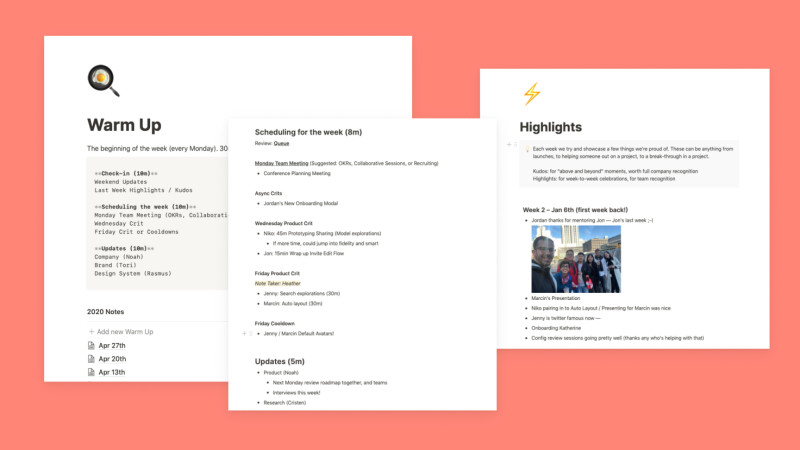
Source: Figma
Technologies
Modern businesses are not built in a silo. Companies use a whole swath of outside technologies to help power their operations, but often don’t share what tools they’re using. By keeping those technologies hidden from each other, we’re stunting a more collaborative, efficient ecosystem of innovation. A tech stack is a good example of this, where software companies can analyze what tools a large company like Airbnb uses and then tailor their offerings and products to fill in the blanks.
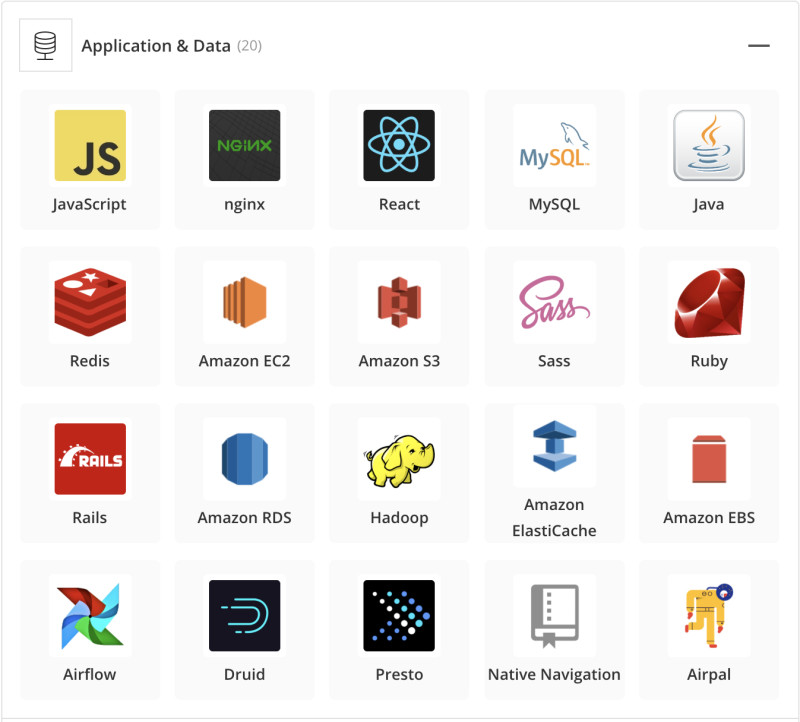
Source: Stackshare
Roadmap
Keeping a company’s roadmap secret can create division both internally and externally. If employees or users are left in the dark, they become much more resistant to change, making flexible innovation much harder than it should be. GitHub has more than 40 million users and yet in July, announced it was releasing a public roadmap in part to encourage feedback on what it’s building.

Source: GitHub
Numbers
Despite the fact that every company in the world has experienced setbacks, it can be hard to admit to those failures. Keeping a drop in revenue close to the chest is the natural reaction. But companies that can be transparent about both their successes and failures have a much greater chance of earning and keeping brand loyalty. Take Tettra, an internal knowledge base business, and co-founder Andy Cook. By publishing and explaining Tettra’s monthly numbers, he made the company seem more human and relatable.
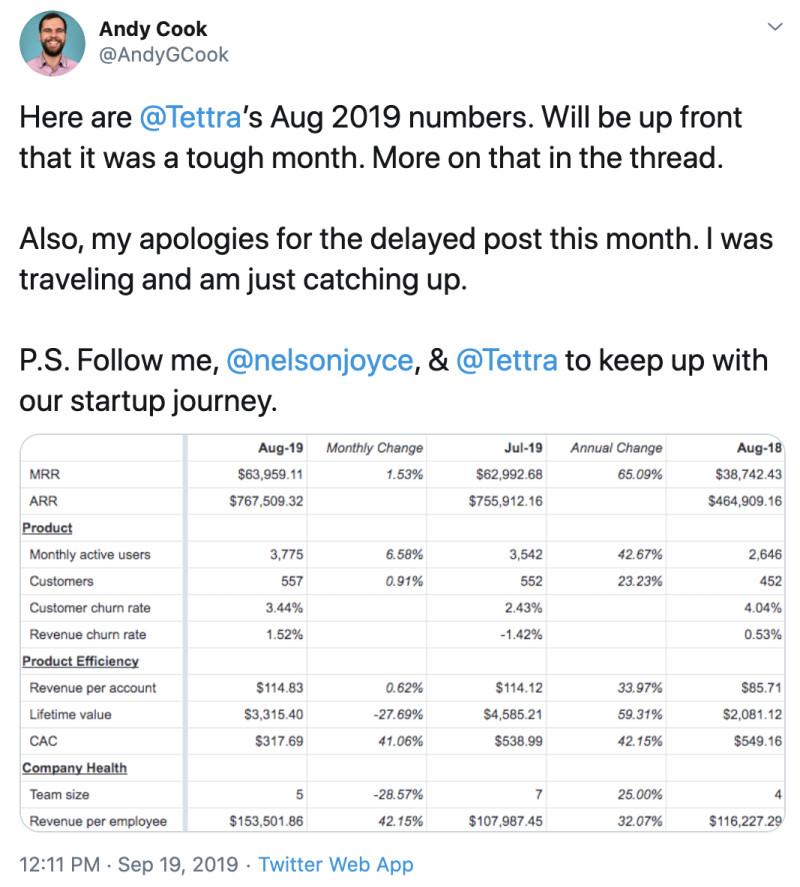
Source: Twitter
Handbook
Imagine how much time has been wasted on first days. A new employee sits down having a vague idea of their role and then goes through a swirl of paperwork, rules, and introductions until finally, they get to go home even more anxious than when they started. This process of wasting everyone’s time can go on for weeks. But companies that are open about their handbooks generally see a rise in new employee efficiency. At Blendle, new employees have no excuse for being unprepared on the first day, ultimately making the process easier for everyone.
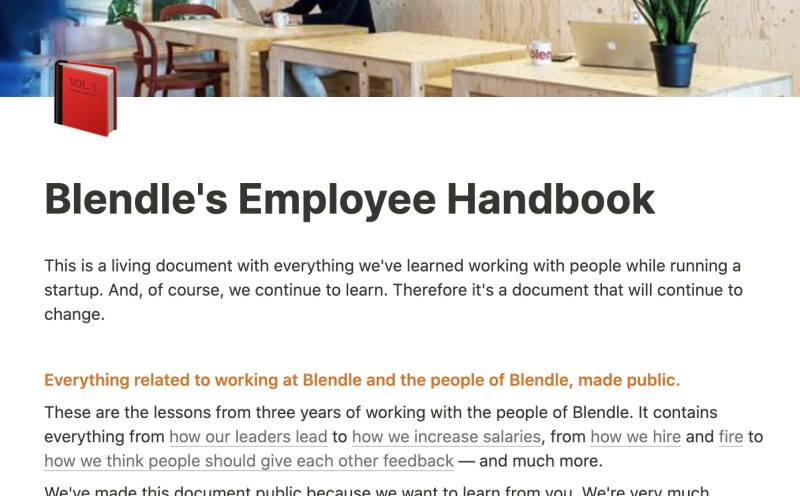
Source: Notion
--
Despite the proven effectiveness of transparency, many companies don’t yet have a platform to do that. They are not big enough to have their own following and they don’t have enough money to spend on sales and marketing. Social media can be a good solution but most platforms are geared towards the employee rather than the organization as a whole. LinkedIn, for example, is built around individual profiles and the news of individuals.
The Org, the world’s largest professional community for teams, is here to eliminate those roadblocks. Organizations can show off their team, announce new hires, and post jobs for free. They can highlight what makes them special and acknowledge the people who make that possible. We believe that transparency will lead to a business world that is more connected and more egalitarian.
Join our mission to make organizations more transparent here.


The ORG helps
you hire great
candidates
Free to use – try today